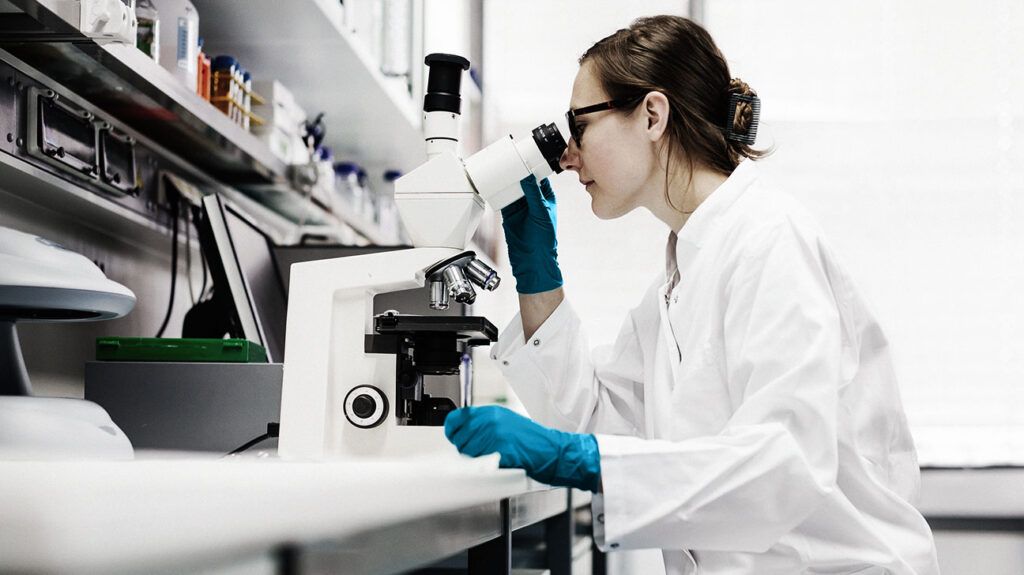Doctors can perform a biopsy to help diagnose oral cancer. This involves collecting cells from part of the mouth and sending them for analysis under a microscope.
A doctor may recommend a biopsy if a person has sores in the mouth or other symptoms of oral cancer.
Read on to learn more about oral biopsies for mouth cancer.
This article looks at when doctors recommend a biopsy, what it involves, what to expect before and after, and more.

A traditional tissue biopsy is the most reliable biopsy for diagnosing oral cancer, according to a
Doctors can use a variety of surgical instruments to collect tissue for a biopsy. For oral cancers, they often use a type of tissue biopsy known as a brush biopsy.
Using a soft-bristled brush, a doctor collects cells from the surfaces of mouth lesions before transferring them onto a slide, staining them with a special dye. They then send them to a laboratory for analysis.
If a person has symptoms of oral cancer, a doctor may request a biopsy. In particular, they may order a biopsy if a person has had a lesion for at least
Other symptoms of oral cancer can include:
- soreness, irritation, lumps, or thick patches on the lips or in the mouth or throat
- white or red patches in the mouth
- a constant sore throat
- an ongoing feeling that there is something stuck in the throat
- a constantly hoarse voice
- lumps on the neck
- chewing, speaking, or swallowing problems
- difficulty when moving the tongue or jaw
- dentures suddenly not fitting due to swelling
- mouth pain
- mouth bleeding
- a numb tongue, or numbness in other areas
- pain in the ear
A dentist may also detect early signs of oral cancer during a regular checkup and refer a person to a specialist, such as a:
- head and neck surgeon
- oral and maxillofacial surgeon
- ear, nose, and throat doctor
- cancer specialist
The specialist may then order a biopsy after performing a physical examination.
Learn more about what oral cancer can look like.
An oral biopsy is a minor procedure that
A doctor
The doctor collects the sample with a scalpel, brush, or other instrument. If they need to make a cut using a scalpel, they will then cauterize the area using heat or apply stitches that dissolve to avoid the need for a stitch removal procedure.
Finally, the doctor sends the sample to a lab for analysis.
People can usually eat food and drink fluids before an oral biopsy.
It is also typically fine to continue taking any regular medications according to the normal dosing schedule.
If a person takes blood thinners, such as warfarin, a nurse may perform a finger prick test to ensure that excessive bleeding is not likely to occur.
For biopsies that take place under local anesthetic, a person will be able to go home the same day.
If a doctor has used a general anesthetic, the individual may need to stay overnight. This can depend on what time of day the procedure takes place and whether the person experiences any side effects from the anesthetic.
Results may take 2 to 6 weeks to become available. A doctor will be able to provide more accurate information about how long they expect the biopsy results from that particular clinic or hospital to come back.
Sometimes, a doctor requires a second opinion, which may take more time.
An oral cancer biopsy can identify abnormal cells. This helps the doctor identify the type of cancer if it is present.
As well as identifying the type of cancer, biopsies can also show how severe the cancer is.
Sometimes, biopsies are inconclusive, meaning that it has not produced a clear result. The doctor may need to request another biopsy or different tests to confirm the diagnosis.
As with any procedure, there are possible risks of an oral biopsy. These include:
- swelling
- bleeding
- infection
A person’s doctor can advise on steps they can take to reduce the likelihood of or manage any risks or side effects that develop.
A doctor will usually need to request other tests along with the biopsy to further assess cancer if it is present. Additional testing can help confirm the diagnosis and check to see if the cancer has spread.
Tests a doctor may order
The doctor can provide more information about what tests they recommend, and answer any questions a person may have.
A doctor can test for oral cancer by performing a biopsy. This involves removing cells or tissue from lesions in the mouth.
A biopsy may be necessary if a person has symptoms of oral cancer, such as mouth sores, constant pain, or bleeding in the area. A biopsy can show abnormal cell changes that mean cancer has developed.
A brush biopsy is often the procedure of choice, and this is relatively painless. A person will usually receive a local anesthetic, meaning they can go home the same day. Some locations in the mouth, such as under the tongue, require a general anesthetic and possibly an overnight stay.
Other tests, such as blood tests or imaging, may be necessary to confirm the diagnosis, assess how advanced the cancer is, and check whether it has spread.
